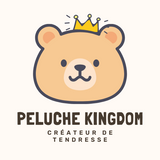
All the Secrets that Make Penguins So Surprising!
of reading - words
Penguins are flightless seabirds that live almost exclusively in the Southern Hemisphere ☀. There are the tiny blue penguins of Australia and New Zealand, the majestic emperor penguins of Antarctica and the king penguins found on many underwater islands, the African penguin (an endangered species) and the African penguin Galapagos, the only penguin found north of the equator. A thick layer of fat and tight, oily feathers allow them to cope with colder temperatures.
The stocky appearance and short legs of penguins have endeared them to people around the world. Although they are birds, penguins have flippers instead of wings . They cannot fly, and on land they waddle while walking vertically, although when snow conditions are favorable they slide on their bellies. In the water, they are expert swimmers and divers, and some species can reach speeds of 25 km/h 🚀 thanks to their fins which propel their streamlined bodies. When they want to go faster, they often start porpoise swimming or jump out of the water while swimming.
1) The Penguin in 10 Seconds TOP Chrono
- COMMON NAME: Penguins
- SCIENTIFIC NAME: Spheniscidae
- DIET: Carnivore 🥩
- HABITATS: Oceans, coasts
- GROUP NAME: Colony
- AVERAGE LIFESPAN: 15 - 20 years
- SIZE: 40cm - 1m14
- WEIGHT: 1 - 40 kg
2) What is the difference between penguins and penguins?
A- The Main Difference
The Penguin is a black ⚫ and white ⚪ bird, just like the penguin. But they nevertheless belong to completely different families. Penguins are located in the Northern Hemisphere ⬆ , and there is currently only one species, the Little Penguin. It is the only species of penguin since the disappearance of the Great Auk in 1844 due to humans. The main characteristic that differentiates the penguin from the penguin is the following. The penguin has retained a primitive characteristic: it can fly !

Penguins, unlike penguins, therefore live in the Southern Hemisphere ⬇ and cannot fly 🚫 . Today there are still several species of penguins.
B- The Origin of a Misunderstanding
The popular belief confuses the penguin and the penguin, due to their rather similar appearances, and especially because in all the other languages, the word to designate the penguin is very close to the word "Penguin" . In English, penguin is called "Penguin" 🇬🇧, a bad translation of this word is therefore at the origin of this error made by many of us. Moreover, throughout this article, just like popular belief, the terms penguin and penguin can be confused.

3) General Characteristics
The 18 different species of penguins can come in a wide variety of shapes and sizes, but all have black bodies and white bellies. This protective backlight allows them to hide from predators like leopard seals and killer whales as they swim. The rare color, limited to the red or yellow iris of the eye in some species, the red beak or feet in some species, the tufts of yellow eyebrows in the three species of Eudyptes, and the orange and yellow on the head, neck and chest in emperor and king penguins
In fact, they spend most of their lives in the ocean 🌊 and do almost all of their hunting for krill (small shrimp), squid, and crabs underwater. Their distinctive colors (a black body with a white belly) also allow them to camouflage themselves in the water when looking for a meal.

Total populations of some species, such as the emperor penguin, are estimated in the hundreds of thousands, but most lesser penguin species certainly number in the millions . Huge island breeding colonies, some teeming with hundreds of thousands of breeding pairs, represent an important potential food resource, but the economic importance of penguins is negligible.
In the 19th century, whalers 🐳 and seal hunters visited certain colonies to look for meat and eggs, and a penguin oil industry once took large numbers of birds. By the early 20th century, however, this exploitation was no longer profitable, and most settlements were left to fend for themselves or actively protected.

Some species are now on the increase, apparently due to the decimation of Antarctic whales in the mid-20th century, which compete with penguins for the krill (tiny crustaceans) on which they both feed. Penguin populations are, however, highly vulnerable to changes in climate and ocean temperature, including recent global warming. Penguins 🐧 are also very sensitive to the reduction of local fish populations by humans.
4) Climate Change and its Effects
About two-thirds of penguin species are listed as threatened on the IUCN Red List , making them one of the most endangered seabirds. Habitat loss and diseases spread by tourists are all threats to them.

Commercial fishing in the Southern Ocean is also a significant concern, as it has cut the supply of fish to the Antarctic Peninsula by about half. This forces many penguins to compete for food and puts them in danger of being accidentally caught by fishing nets 🎣.
Climate change is one of the greatest threats to penguin populations. Warming polar regions ♨ have melted sea ice, which penguins rely on to find food and build their nests. Due to rapidly changing conditions, Antarctica could lose most of its penguins to climate change by the end of the century. To survive, they might have to move to new habitats.

A 2008 WWF study estimated that 50% of emperor penguins and 75% of Adélie penguins will likely decline or disappear if global average temperatures rise by just 2°C 🌡 above pre-industrial levels - a scenario that could be achieved in under 40 years old.
5) Predators
A- Predators at Sea
The main enemies of penguins at sea are the sea leopard (Leopard seal), the killer whale ( Orca ). Seals also take penguins near Australia, New Zealand and other sub-Antarctic regions. Seal leopards, which reach more than 350 kg and more than 4 m for the largest specimens, can eat up to 15 penguins per day 👩🍳. These predators mainly attack these prey in the sea while the parents go looking for food for their young or even during the first swims of the little penguins. But it can also attack penguins on land, which is still rarer.

Penguins still have many other predators at sea, such as the white shark , the Weddell seal , the Hooker sea lion and the Cape sea lion which is the main predator of the African penguin.
To eat their prey, leopard seals shake penguins in the water to loosen the flesh from the bones. The killer whale, despite its excessive size 📏 compared to its prey, does not like to eat penguins with their feathers. To remedy this, with its powerful tongue, it compresses the penguin against its palate to keep only the organs and penguin flesh and throws the rest back into the ocean. Despite its many predators, that's not all, penguins also have predators on land .

B- Predators on Earth
On land, predators are only birds that have the advantage of flight over penguins. Penguins group together in colonies, and when they all come together, they are safe. The birds therefore attack the eggs 🥚, the chicks which stray from the group and the weakened penguins. Only the largest specimens of birds occasionally attack healthy adult penguins. Often, these predators hunt penguins in groups to increase their chances of success.
The main predators on earth 🌱 are:
- The Antarctic Skua (Catharacta antarctica). Their strategies require them to work in pairs. One bird will distract the parent caring for the egg or chick on Earth and the other has the task of attacking it.
- Antarctic giant petrel
- The greater scabbard beak (Chionis alba).
- Forster's Caracara (Phalcoboenus australis). It only attacks chicks and is only found in the Falkland Islands
- Wilson's Petrel (Oceanites oceanicus)
- The Kelp Gull .

Outside of the Subantarctic and Antarctic islands, in warmer territories, other predators are present such as the Fox 🦊 , the Snake 🐍 and for the Cape penguin, the ibis .
6) Food Habits
The type of food used varies by species, geographic region and time of year. Most southern little penguins feed primarily on krill (small shrimp 🦐 that whales also feed on), which reach high densities in the rich, well-oxygenated waters of Antarctica. Cephalopods ( squid 🦑 and cuttlefish ) and small fish can constitute significant fractions of the food. For some, like the African penguin, fish 🐟 is the staple of the diet. The total weight of food consumed by a large colony of penguins is prodigious, often exceeding several tons per day.

7) Locomotion and Orientation
A- Locomotion in the Ocean and Life on Earth
Penguins are adapted for rapid locomotion in water, where the wings (fins) are used for propulsion; these birds "fly" underwater . When moving at high speeds, they frequently leave the water in jumps that can carry them a meter or more into the air; it is during this time that they breathe.
On land, penguins are much clumsier, even amusing, as they tend to waddle , jump , or run with their bodies tilted forward . However, despite their short legs, penguins can run with surprising speed. Some, like northern penguins (Eudyptes moseleyi), southern penguins (E. chrysocome) and Adélie penguins, move between rocks with agility, using their fins to balance themselves 🤸♀. Polar penguins can travel long distances quickly by "tobogganing", i.e. sliding on the ice on their stomachs and pushing off with their feet forward.

B- Survival and Orientation
The fins, along with the beak, are the main weapons of defense and attack. If it is particularly cold, the penguins gather in large colonies which protect them from predators and provide them with warmth 🔥. These colonies are made up of thousands, even millions of penguins.
Scientists have long wondered how penguins can find their way back to their colonies from offshore, where currents may have carried them great distances. We also wonder how they are able to navigate correctly on land in the absence of well-defined landmarks 🧭. Studies of penguins transported to the interior of Antarctica have shown that they are able to find their way back to the ocean using the sun as a steering aid. It is likely that the same means of orientation is used at sea. Approaching the coast, they are able to recognize the characteristics of the coastline and the ocean floor.

8) Breeding
A- The Eggs, the Chick and the Youth
Penguins come ashore to lay their eggs and raise their chicks . Most penguins stay with their mates for many years and only lay one or two eggs at a time. One egg is laid by emperor penguins and king penguins like all others lay two or sometimes three.
Egg incubation is practiced by both sexes in all species, except in the emperor penguin, where it is exclusively carried out by the male ♂️, and it begins immediately after spawning. With the advent of incubation, the restlessness and myriad cries that characterized mating give way to calm and inactivity. Poor incubation behavior of inexperienced birds frequently results in eggs being abandoned or broken.

The mortality rate (eggs and chicks) is very important at the egg stage, varying from year to year depending on the climatic conditions 🌦, the percentage of young birds in the breeding population and the pressure of predation. In general, the mortality rate (eggs and chicks) is 40 to 80% of eggs laid. In coastal colonies, predators are a significant threat to eggs and chicks . These predators range from the orca to the leopard seal (for the chicks) to the skuas (for the eggs). On the Australian, African and South American continents, the nocturnal habits of certain penguins and the fact that they nest in burrows considerably limit predation, which is mainly by gulls and humans.
After spawning, the female generally goes to sea to feed, and returns to take over from her companion after about 10 to 20 days. Subsequently, the father and mother alternate for periods of a week or two. The female emperor penguin, however, often has to walk 80 to 160 km 🏕 from the colony to the sea and does not return until the end of the incubation period. During the 64-day incubation period , which extends through the height of the Antarctic winter, the male emperor penguin incubates the egg, holds it on its legs, and lives on the stored fat reserves. During severe winter storms, colony members gather together to protect each other from the wind and cold in tight crowds called "huddles."

It takes 24 to 48 hours to emerge from the shell, during which the incubating parent is particularly irritable. The chick shows a feeding behavior as soon as it hatches , receiving a "soup" 🍵 regurgitated with crustaceans or fish by introducing its beak into the open mouth of the parent. During its first days, the young bird is sheltered under the body of one of its parents, who take turns in foraging and brooding.
As it grows, the young bird remains alongside its parent, although the young are able to maintain body heat and move around on their own. The baby bird then joins a hundred of its contemporaries in a group of nurseries or crèches 🏩. This group is sometimes guarded by a few adults while both parents of the chicks forage at sea. When they return with food, the chicks listen to the unique audio frequency of their parents' call, which allows them to reunite in a large and noisy crowd.

The growth period of the young bird , from hatching to complete independence 🐥, varies from two months, in the smallest species of the genus Eudyptula, to 5.5 months in the emperor penguin and 12 to 14 months in the penguin royal.
During the breeding season, the number of "unemployed" adults in the colony increases with the addition of those who have lost eggs or chicks. In emperor penguin colonies, these unemployed birds often interfere with parents having young and cause increased mortality 🦴.

B- Moulting
At the nursery stage, the down that has covered the chick since hatching 🐣 is replaced by a coat of short, stiff feathers, similar to those of the adult but usually somewhat different in color. Once this moult is complete, the young leaves the colony to look for their own food at sea.
Adult penguins also begin to molt all their feathers once a year shortly after the chick has fledged. Unlike some birds that lose a few feathers at a time, penguins lose all their feathers at once. They must fast 🚱 during this time since they cannot hunt without their waterproof feathers because during molting the bird cannot enter the water. It retreats to a common molting site usually located in a sheltered area far from the colony. Molting duration varies from about two weeks in small species to more than a month in larger ones.

C- Geography and Variations
Many life cycle characteristics of penguins vary depending on body size and geographic distribution 🗺; the timing of reproduction can also vary within a species depending on latitude. The majority of species only reproduce once a year . Some species, such as the African penguin (Spheniscus demersus), and the blue penguin breed twice a year. Whereas, on the contrary, the king penguin reproduces twice in three years.
Most penguins start breeding in spring 🍃 or austral (southern) summer. King penguins have a cycle of 14 to 18 months, and when an individual pair breeds depends on the success or failure of the previous breeding attempt. Some populations of breeding penguins (Pygoscelis papua) also breed in winter. Breeding of the emperor penguin begins in autumn, apparently at a time when the long development period allows young to be produced in mid-summer, when the chances of survival are greatest .

The African penguin is notable for its lack of synchrony between populations, but otherwise its breeding schedule is essentially comparable to that of most other species. In the Crozet Islands off southern Africa, for example, spawning takes place in July. The two eggs are incubated for 35 or 36 days, and the breeding of the chick 🐤 lasts two months. The last immature birds go to sea in January.
D- Looking for a Partner
Many types of visual and vocal displays are used between the birds' arrival at the colony and their departure. Courtship calls are used during mating and, to a lesser extent, during successive phases of reproduction. There are marked vocal differences 📢 between the sexes in the emperor and king penguins and less marked dimorphisms in some other species.

Upon arrival at the colony, each bird returns to the nest it left the previous year and generally rejoins its companion from the previous year , unless the death of the latter forces it to choose another partner. This even applies to the emperor penguin, which is able to find its partner 👫 despite the absence of a nest and the large size of the colony.
The manifestations that occur during colony reassembly and the search for partners, as well as those preceding copulation, are quite similar in the majority of species, but the vocalizations 🎙 that accompany them are more diverse. Different species have been described as trumpeting , croaking , clucking , and cooing .

Members of the genus Spheniscus are called jackass penguins for the braying sounds they make. The behavior of birds with more experienced ages is more elaborate 💡 and more efficient than that of young individuals. For example, Adélie penguins (Pygoscelis adeliae) may return to the breeding colony starting in their third year but do not breed successfully until their fifth or sixth year.
9) Form and Function
A- Adapted to the Aquatic Environment
Penguins are highly specialized for their flightless aquatic existence . The legs are located much further back than those of other birds, so that the bird mostly carries itself upright; his gait can therefore be described as plantigrade (i.e. on the soles of the feet). The sole includes the whole foot and not just the toes, as in other birds. The most notable feature of this group is the transformation of the forelimb into a paddle 🚣. This transformation is accompanied by a body morphology particularly adapted to movement in a liquid medium.

The rib cage is well developed, and the sternum carries a pronounced keel for the attachment of the pectoral muscles, which move the fins. The fin has the same skeletal base as the wing of birds in flight. With its shortened and flattened elements, producing a relatively rigid limb covered in very short feathers (an ideal organ for rapid propulsion). The body plumage also consists of very short feathers , which minimizes friction and turbulence. The density of the plumage and the layer of air it retains ensure almost complete insulation of the body.
B- Fighting Cold and Salt Water
Insulating the bird's body is particularly important for Antarctic species that live in waters always below 0°C. The cooling power of sea water at -1.9°C is equal to that of a temperature of -20°C with a wind of 110 km/h. The skin is insulated by a layer of air trapped under the plumage, and the only bare skin in direct contact with water is that of the feet. In the case of the emperor penguin on land, the feet are in almost constant contact with the ice 🏔. The skin temperature is around 0°C and snow does not melt on contact.

This is possible thanks to remarkable anatomical arrangements in the lower limb, where closely adjacent arteries and veins form a heat exchange system between opposing blood flows 💯. This arrangement allows cooled blood from the feet to absorb heat from flowing blood, thus providing maximum heat saving compatible with foot function.
Like other seabirds, penguins have salt glands that allow them to ingest salt from seawater. Excess chloride is excreted in the form of a solution whose concentration is higher than that of sea water 🧂. These glands are located above the eyes and are already functional in the young chick, which begins to consume foods of marine origin from its first day of life.

Recent research has shown that more geographically isolated species, such as the emperor penguin, can be prone to disease . Some, like the Adélie penguin, carry traces of pollutants in their bodies 🏭, although in smaller quantities than those found in many birds that live closer to humans.
10) Evolution
Paleontological evidence indicates that penguins and the order Procellariiformes (albatrosses, shearwaters and petrels ) had a common origin. Both groups are represented by well-defined fossils dating back about 50 million years . The flightless sphenisciform line has produced a number of distinctive lateral branches, all recognizable to penguins, some of which are giant in size. All the fossil remains 🦕 of penguins were collected in the current distribution area of the Sphenisciformes. Some apparently lived in warmer regions than most penguins today.

Phylogenetic analysis of living and fossil penguins shows that the group evolved large body sizes early in its history. For example, two of the largest known fossil penguins – Acadyptes, which was about 1.5 meters tall, and Anthropornis, which was about 1.8 meters tall – date from the Eocene (56 to 33.9 years ago). million years). Living penguins form a distinct lineage characterized by smaller, highly aquatic species 💧 that began around 8 million years ago. The relatively small size of living penguins is therefore a geologically recent phenomenon that postdates the original radiation of giant penguins.
11) Order Sphenisciforme (Penguins)
18 species of the same family (Spheniscidae) with 6 genera found in the oceans of the southern hemisphere 🌅; fin-like wings for underwater propulsion; short, sturdy webbed feet; straight posture; feathers short and dense, moulted in patches; length 35-115cm; fossil forms up to 180 cm.

- Genus Eudyptes (crested penguins)
7 species: erect crest, Fiordland, macaroni, northern locusts, southern locusts, king locusts and snares.
- Genus Spheniscus (black-footed penguins, or jackass)
4 species: African, Galapagos, Humboldt and Magellanic.
- Genus Pygoscelis
3 species: Adelie, chinstrap and gentoo.
- Genus Aptenodytes
2 species: emperor and king.
- Genus Eudyptula (blue penguin)
1 species, also called little penguin or fairy penguin.
- Genus Megadyptes (yellow-eyed penguin)
1 species.

12) The Great Penguin
The great auk (Pinguinus impennis), also called penguin, flightless seabird, extinct since 1844 . Great auks belonged to the Alcidae family. They bred in colonies on rocky islands off the coast of the North Atlantic; fossil remains have been found as far away as Florida, Spain and Italy. The body of the great auk was approximately 75 cm long; the wings, which were used for swimming underwater, were less than 15 cm long. The large black beak had eight or more transverse grooves. The bird stood upright on dry land. Its back and head were black, its forehead white, and a large white spot between the beak and the eye.

Completely defenseless, great auks were killed by hunters for food and bait, particularly in the early 1800s. The birds were captured in huge numbers, often pushed onto a board and shot en route to the hold of a boat 🛳. The last known specimens were killed in June 1844 on the island of Eldey, Iceland. About 80 great auks and a similar number of their eggs are kept in museums.










